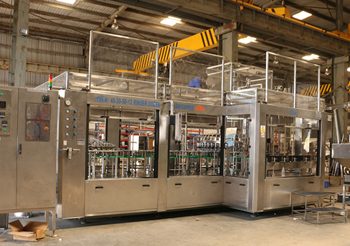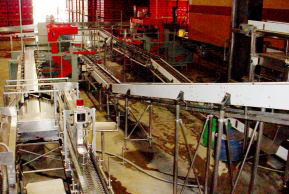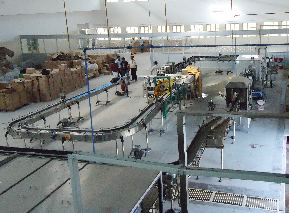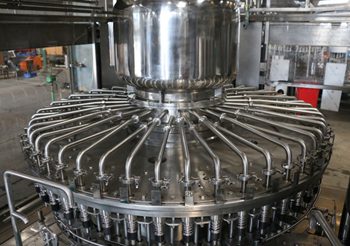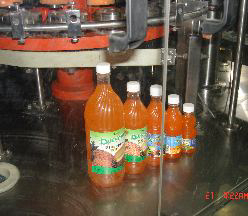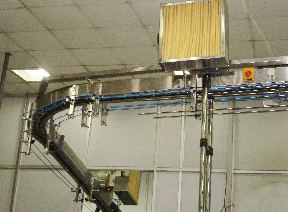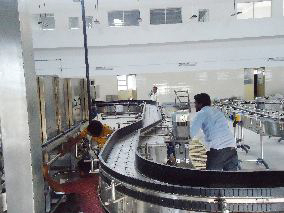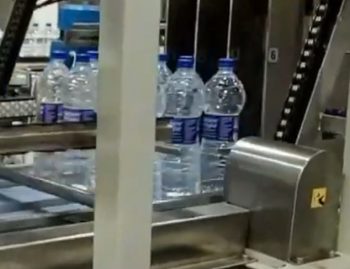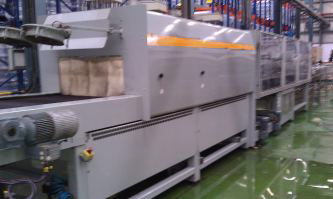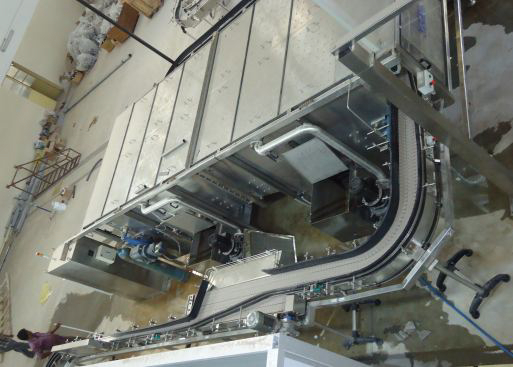
When it comes to running a successful business, every detail counts—from the quality of your product to the way it gets packaged. Packaging machinery plays a pivotal role in this equation, impacting not only efficiency but also brand perception. If you’re looking to elevate your operations and stand out in today’s competitive market, choosing the right packaging machinery is essential.
But with so many options available, how do you navigate through them all? Whether you’re a small startup or an established corporation, understanding what type of machinery best suits your needs can be daunting. This guide aims to simplify that process for you, breaking down everything from different types of machines and their functions to important considerations like size and scalability.
Get ready to unlock the secrets of effective packaging solutions tailored just for your business!
The Importance of Packaging Machinery for Businesses
Packaging machinery is more than just a tool; it’s an investment in your brand’s future. Efficient packaging systems streamline operations and reduce labor costs, allowing businesses to scale effortlessly.
It also enhances product protection during transit. Well-packaged items minimize damage risks, ensuring that customers receive their purchases in perfect condition. This reliability fosters trust and loyalty among consumers.
Moreover, visually appealing packaging can elevate your brand image. Machinery that produces attractive designs or unique shapes helps products stand out on crowded shelves, capturing consumer attention instantly.
In today’s eco-conscious market, advanced machines can even help implement sustainable practices by using less material or incorporating recyclable options. This not only benefits the environment but also aligns with the values of many modern consumers.
Effective packaging machinery supports efficiency while reinforcing quality—key elements for thriving in any industry.
Types of Packaging Machinery and Their Functions
Packaging machinery comes in various types, each serving specific functions that cater to different business needs.
Filling machines are designed to dispense products into containers accurately. These can handle liquids, powders, or granular items depending on the industry.
Sealing machines ensure that packages remain airtight and tamper-proof. They come in heat sealing, vacuum sealing, and induction sealing options.
Labeling machines automate the process of applying labels to products. This enhances branding while ensuring compliance with regulations regarding product information.
Wrapping machines protect goods during transportation by securely wrapping them with plastic film or paper. They’re essential for maintaining product integrity throughout the supply chain.
Case packing systems streamline the packaging process by grouping multiple items into larger boxes or cases efficiently. Each type of machinery plays a pivotal role in enhancing productivity and ensuring quality control across operations.
Factors to Consider When Choosing Packaging Machinery
Selecting packaging machinery isn’t a one-size-fits-all process. Each business has its own unique needs.
First, consider the type of products you package. Different items require different machines—fragile goods need gentle handling, while bulk materials might need robust solutions.
Next, think about production speed. Your machinery should keep pace with your output goals without compromising quality.
Space is another critical factor. Assess your facility’s layout to ensure the equipment fits comfortably and allows for smooth workflow.
Don’t overlook compatibility with existing systems. The new machine should integrate seamlessly into your current operations for maximum efficiency.
Budget plays a vital role in decision-making. Weigh initial costs against long-term value and maintenance expenses to find what’s best for your bottom line.
Popular Brands and Models in the Market
When exploring popular brands of packaging machinery, a few names consistently stand out. Companies like Bosch Packaging Technology and Krones are known for their innovative designs and reliability. They offer a wide range of machines suitable for various industries.
Another notable brand is SIG Combibloc, which specializes in aseptic packaging solutions. Their technology has garnered praise for extending shelf life while maintaining product quality.
For those in the food sector, companies such as Multivac provide versatile solutions that cater to both small-scale operations and large manufacturers.
Packaging Machinery Manufacturers Association (PMMI) highlights several other emerging brands that focus on automation and efficiency, making waves in the market.
Investing time to research these options can significantly enhance your production line’s effectiveness. Each brand brings unique features tailored to different needs within the industry.
Understanding Your Business Needs
Understanding your business needs is crucial when selecting packaging machinery. Start by assessing the products you offer. Consider their size, shape, and fragility. Different items require different types of packaging solutions.
Next, think about your production volume. Are you running small batches or mass production? This will influence the speed and efficiency of the machinery you choose.
Don’t forget about regulatory requirements specific to your industry. Some sectors have strict guidelines on packaging materials and processes that need consideration.
Engaging with team members who handle packing daily can provide valuable insights too. They often know what works best in practice versus theory.
Consider future growth plans for your business. It’s essential that your chosen solution can scale as demand increases or changes over time without significant additional investment.
How to Determine the Right Size and Capacity for Your Packaging Machinery
Determining the right size and capacity for your packaging machinery is crucial. It starts with understanding your production volume. Take a close look at how many products you package daily or weekly.
Next, consider the dimensions of your product. Larger items require more space, while smaller ones may allow for compact machines that save floor area.
Think about future growth too. If you anticipate an increase in demand, invest in equipment that can handle higher capacities without frequent replacements.
Efficiency plays a key role as well. A machine that’s too small can lead to bottlenecks and delays, impacting overall productivity.
Consult with manufacturers or industry experts to ensure you’re choosing machinery tailored to your specific needs and goals. Their insights can make all the difference in selecting the perfect fit for your operations.
Maintenance and Cost Considerations
Maintenance is a crucial aspect of packaging machinery. Regular upkeep ensures optimal performance and extends the lifespan of your equipment. Neglecting maintenance can lead to costly downtime and repairs, which disrupts production.
Consider the cost implications as well. Initial purchase prices vary greatly among models, but long-term expenses such as parts replacement and servicing can add up quickly.
Evaluate warranties offered by manufacturers; they often include routine maintenance plans that can save you money in the long run. Look for machinery with easily accessible components for quicker repairs.
Think about who will perform maintenance too—your team or an external service? Training your staff may require initial investment but pays off when it reduces dependency on outside help.
Understanding these factors helps in budgeting effectively while ensuring reliable operation of your packaging processes.
Training and Support for Operating Packaging Machinery
Training is essential for anyone operating packaging machinery. Proper training ensures that your team understands how to use the equipment efficiently and safely. When employees are well-trained, they can minimize errors and improve productivity.
Support doesn’t stop at initial training sessions. Continuous support is crucial as technology evolves. Many manufacturers offer ongoing assistance, including troubleshooting and advanced training modules.
Documentation also plays a significant role in effective operation. User manuals, video tutorials, and online resources provide valuable references for staff when questions arise.
Consideration should be given to how user-friendly the machinery is. Intuitive controls reduce the learning curve, allowing new operators to get up to speed quickly.
Investing in comprehensive training programs enhances worker confidence while ensuring compliance with safety regulations. Supporting your team means investing in their success and ultimately benefiting your business’s bottom line.
Integration with Existing Systems
Integrating new packaging machinery with your existing systems is crucial for seamless operations. Compatibility can greatly enhance productivity and reduce downtime.
Start by assessing your current workflow and software. Identify how the new machinery will fit into these processes. This understanding helps in choosing equipment that aligns well with your needs.
Communication between machines is vital. Look for options that support data sharing or have open protocols. This allows for real-time monitoring and adjustments, ensuring efficiency.
Also, consider training staff on both old and new systems to minimize disruption during the transition phase. A smooth integration can lead to significant improvements in overall performance.
Don’t forget about maintenance capabilities as well. Choose machinery that can easily connect to diagnostic tools, enabling quick troubleshooting if issues arise down the line.
Future Considerations: Scalability and Upgrades
When investing in packaging machinery, think about the future. Scalability is essential for growth-oriented businesses. As your production demands increase, you want machinery that can adapt without needing a complete overhaul.
Consider equipment with modular designs. These allow easy upgrades and expansions based on your needs. Instead of replacing entire systems, you can enhance specific components to improve efficiency or output.
Also assess software compatibility. Machinery integrated with advanced technology offers better tracking and automation options. This flexibility ensures that as market trends evolve, your operations can pivot seamlessly.
Budgeting for future upgrades is crucial too. Setting aside funds will help manage costs when it’s time to scale up or make significant changes, ensuring you’re always prepared for what lies ahead in the industry landscape.
Conclusion
When it comes to selecting the right packaging machinery for your business, a thoughtful approach is essential. Understanding the significance of efficient packaging can drive productivity and enhance customer satisfaction. With various types available, it’s crucial to assess which machinery aligns best with your operational needs.
Evaluating factors like size, capacity, maintenance requirements, and integration capabilities will guide you toward making an informed decision. Knowing popular brands can also help narrow down choices while ensuring reliability in performance.
Your unique business needs should always take center stage during this process. Whether you’re just starting or looking to upgrade existing equipment, keeping scalability and future upgrades in mind will position your business for sustained growth.
Investing time into training staff on new machinery ensures smooth operations moving forward. Choosing the right packaging machinery isn’t just about efficiency; it’s about setting up your business for long-term success and adaptability in a changing market landscape.
